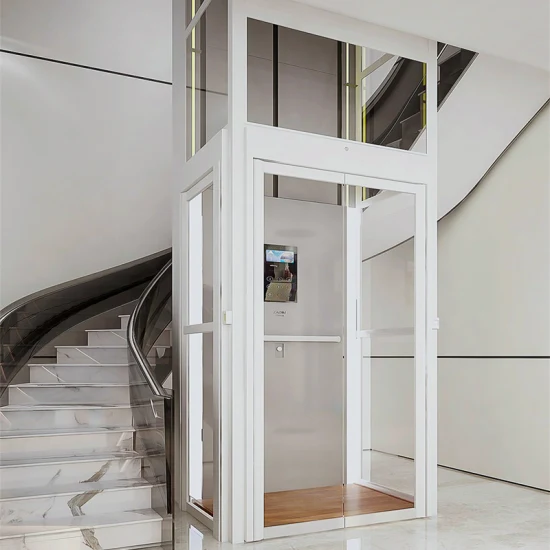We Maintain Lifts with Accuracy: Ensuring Security and Efficiency
We Maintain Lifts with Accuracy: Ensuring Security and Efficiency
Blog Article
Exploring the World of Lifts: Common Concerns Dealt With by Numerous Lift Systems
As we navigate with the upright transport systems of modern-day buildings, lifts stand apart as an indispensable element of our daily lives. Nevertheless, behind their smooth operation exists a world of complex devices that can in some cases run into challenges. From hydraulic lifts to grip systems and machine-room-less styles, each lift type comes with its collection of typical problems. Understanding these difficulties is critical for guaranteeing the smooth performance of these vital systems. Let's discover the complexities that underlie the operation of lifts and the possible issues that can occur, losing light on the intricate web of lift systems.
Hydraulic Elevators
Hydraulic elevators, typically favored for low-rise structures, make use of fluid stress to control the movement of the elevator automobile (lift repair companies). This system includes a hydraulic pump pressing oil right into a cyndrical tube, triggering the lift to relocate in the preferred direction. While hydraulic elevators are understood for their peaceful and smooth operation, they do include their own set of usual concerns
One common issue with hydraulic elevators is oil leak. In addition, problems with the control system, such as defective shutoffs or a malfunctioning pump, can create interruptions in the elevator's activity.
Routine maintenance and prompt fixings are necessary to make sure the smooth functioning of hydraulic lifts. By attending to these common concerns proactively, structure owners can decrease downtime and make sure the safety and performance of their vertical transport system.
Grip Elevators
When thinking about vertical transport systems in buildings, one more typical kind apart from hydraulic elevators is the traction lift. Traction lifts operate making use of a system of ropes and weights that move the elevator vehicle by clutching onto the hoist ropes. This system permits for smoother and quicker upright transportation contrasted to hydraulic systems.
One of the usual issues encountered by traction lifts is rope wear. The constant motion of the ropes within the traction system can bring about damage over time, possibly causing the elevator to breakdown or become dangerous for use. Routine examinations and maintenance of the ropes are important to guarantee the lift's correct functioning and security.
An additional issue that traction lifts might encounter is associated to the control system. Troubles with the control system can lead to issues such as unpredictable movement, hold-ups in response times, or perhaps total closures. Regular testing and maintenance of the control system are vital to avoid such issues and make sure the lift's integrity.
Machine-Room-Less (MRL) Lifts

Among the essential components of MRL lifts is the compact gearless grip machine that is mounted within the hoistway. This device effectively drives the elevator car without the requirement for cumbersome tools discovered in typical traction lifts. Furthermore, MRL elevators commonly utilize a counterweight system to stabilize the vehicle, more enhancing their power efficiency.
In spite of their benefits, MRL lifts might face difficulties connected to upkeep and repair because of the restricted room for tools installation. Ease of access for servicing elements within the shaft can be restricted, calling for specialized training for technicians. Proper maintenance schedules and routine evaluations are vital to make certain the ongoing smooth procedure of MRL lifts.
Overloading and Weight Restriction Issues
Overloading and weight restriction concerns are important worries in elevator operations. Elevator suppliers layout lifts with specific weight capacities to make certain traveler security and equipment long life.
When elevators are overloaded, it places extreme strain on the electric motor, cable televisions, and other parts, potentially causing breakdowns or malfunctions. If they discover excess weight, safety systems such as sensors and overload sensing units are in place to stop elevators from relocating. Additionally, surpassing weight limits can cause increased power view it now consumption and deterioration on the lift system.
To reduce straining problems, building managers need to prominently display weight restrictions in elevators and inform owners on the importance of sticking to these limitations - lift repair companies. Regular maintenance checks by certified specialists can additionally help make sure that lifts are operating within safe weight specifications. By addressing overloading and weight limitation problems proactively, structure proprietors can enhance elevator safety and effectiveness
Electric System Failings
Exceeding weight limits in elevators can not just bring look at this now about mechanical issues however likewise possibly add to electric system failings within the lift infrastructure. Electrical system failures are an important problem in lift operation, as they can cause unexpected shutdowns, malfunctions, or even security dangers. One usual electric concern is the getting too hot of parts as a result of excessive current flow triggered by overloading the elevator past its ability. This can lead to harm to the motor, control, or circuitry systems, leading to expensive repair work and downtime.
Normal maintenance and examinations are vital to identify and attend to potential electric concerns quickly, making certain the risk-free and reliable procedure of elevator systems. By adhering to weight restrictions and conducting routine electric system checks, building owners can alleviate the threat of electrical failures in lifts.
Conclusion

Hydraulic elevators, usually chosen for low-rise structures, use fluid stress to control the motion of the lift automobile.When considering vertical transport systems in buildings, one more usual type apart from hydraulic lifts is the traction elevator. Grip elevators operate making use of a system of ropes and counterweights that move the lift car by grasping onto the hoist ropes. Unlike typical elevators that need a different machine room to house the devices, MRL lifts integrate most of the elements within the shaft, removing the need for a devoted maker area.In conclusion, elevators deal with usual issues such as hydraulic malfunctions, traction system failures, and electric system troubles.
Report this page